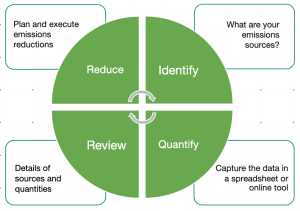
- This event has passed.
COTE SC Webinar: Carbon Clarity: Understanding, Tools, and Implementation

COTE SC Carbon-Focused Webinar Series

Part One: Carbon Clarity: Understanding, Tools, and Implementation
Wednesday December 10, 12-1 PM
Presenters: Catalyst Partners
Format: Live One-hour lecture-based webinar accompanied by slides and Q&A
CEUs: 1 CEU/LU
Course Description:
“Carbon Clarity: Understanding, Tools, and Implementation” is a comprehensive course designed to equip participants with a deep understanding of carbon emissions in the building industry, both from embodied and operational perspectives. The course provides an in-depth exploration of the impact of carbon on the environment, methods for assessing and reducing carbon footprints, and practical tools for implementing sustainable practices. Through a combination of theoretical knowledge and real-world case studies, participants will gain the skills necessary to conduct carbon assessments and implement strategies to minimize carbon emissions in building projects. This course is essential for architects, engineers, project managers, and sustainability professionals aiming to advance their expertise in sustainable building practices and carbon management.
Learning Objectives
By the end of this course, participants will be able to:
- Understand the Basics of Carbon and its Environmental Impact:
Explain what carbon is and how it impacts the environment, distinguishing between embodied and operational carbon.
Discuss the role of greenhouse gases and their global effects, focusing on carbon dioxide (CO2) and other significant greenhouse gases.
2. Identify and Utilize Tools for Carbon Assessment:
Learn about various tools and resources available for carbon assessment, including Tally, Athena Impact Estimator, EC3, and One Click LCA.
Understand the specific applications and benefits of each tool in evaluating and managing the embodied carbon of building materials.
3. Implement Strategies for Reducing Embodied Carbon:
Describe the life cycle assessment (LCA) phases and their relevance to embodied carbon.
Develop strategies for reducing embodied carbon through the selection of low-carbon materials and alternative construction methods.
4. Assess and Manage Operational Carbon:
- Define operational carbon and its significance in the lifetime use of buildings.
- Utilize tools like EnergyCAP, Integrated Environmental Solutions, and the EPA Carbon Footprint Calculator to track and reduce operational carbon emissions.
5. Apply Knowledge to Real-World Scenarios:
- Analyze case studies of building projects that have successfully implemented carbon reduction strategies.
- Develop a comprehensive plan to reduce the carbon footprint of a specific building project, considering both embodied and operational carbon.
6. Engage with Current Standards and Certifications:
- Familiarize with third-party rating systems that track and report carbon metrics, such as LEED and LBC certifications.
- Understand the requirements for achieving these certifications and the benefits they provide in promoting sustainable building practices.
By integrating these objectives, the course aims to empower participants to make informed decisions that contribute to a more sustainable and carbon-conscious building industry.

